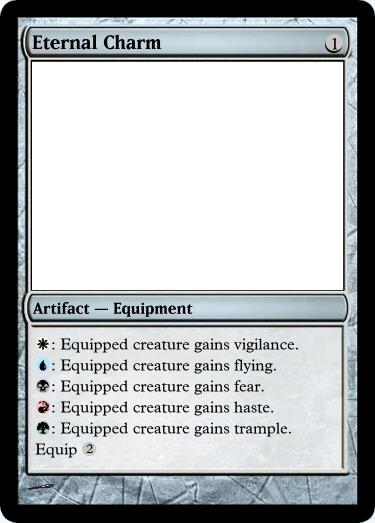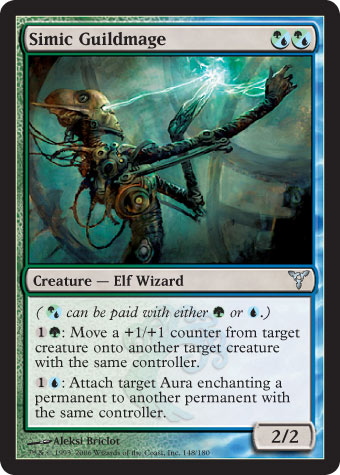A lot of new players have this tendency to go all gung-ho and put everything they think is good into their decks.This often results in highly inflated decks of about 80 cards and up. (I've seen crazy 150 card decks - I have no clue how the hell they plan to win besides decking you out.) Often, there actually aren't enough good cards to be seeing that many cards in one deck. The tendency is actually to become overprotective of your deck - meaning cards that should go into the sideboard, end up being maindecked. This results quite often in drawing a Disenchant against a creature-heavy deck, drawing your many 1/1, 1/2, 2/2 Elves when you need that big 6/6 Wurm (or Elf Mutant) to survive your opponents' army of Flanking or Bushido enabled creatures or even Pestilence/Pyrohemia. Does that mean it doesn't happen in a 60 card deck? No. However, in a 60 card deck - it is a lot easier to manage your deck. Tuning your deck is a lot easier than if it were in a 120 card deck. It's a lot easier to decide whether or not those 1/1 Llanowar Elves are helping your mana situation. Are those Wood Elves pulling Forests when you need them, or are they pulling Forests when you DON'T need them?
Tuning your mana is a lot easier if you conform to the 60 card deck. It is not only easier to predict what happens when, say, you remove one land from your deck - than removing one land from... a 120 card deck. If you are going to say it is just half the effect than in a 60 card deck, that is most certainly incorrect - since there is no way to determine half. It is immediately clear that the difference is not linear if you were to compare 22 lands to 24 lands in a Magic deck. Is 23 a halfway point? Most certainly not. The difference that happens in your shuffling and drawing makes 24 yield a very different mana experience than a 22 land deck.
Of course, this also means the effect of removing one card is far more predictable. That being said, in a 120 card deck, chances are you got there by not willing to cut anything - so let's assume your 120 card deck is quite full of 4-ofs. The truth is, while you might need those 4 Dark Banishings in a 60 card decks, you probably never need 4 Disenchants/Naturalizes in your main deck. You might need them in your sideboard, but not in your main deck. And those Legendary stuff, you don't need too many of them - drawing into a 2nd one when your 1st one is still kicking ass feels lousy - unless it so happens - that you think your opponenet will probably off your 1st one soon.
Putting cards in funny numbers may seem odd. You may even think it's stupid. What's the point of having 1 Indrik Stomphowler? What's the point of having 1 Maga, Traitor to Mortals? What's the point in having 3 Umezawa's Jitte? What's the point in having 1 Seed Spark? 2 Yosei, the Morning Star? 3 Kodama of the North Tree? What's with deckbuilders and this strange numbers? Yet when you happen to put the deck together - it happens to WORK. What looks like random combinations of numbers of powerful cards actually happens to work really well together - and in those strange numbers. Modifying those numbers can have dire consequences on the deck!
60 cards is the minimum limit. There's a reason why you should always use the minimum cards allowed. The most important is, of course, consistency. If Magic involved less than 60 cards - you'd be seeing plenty of 7 or 8 card decks in Vintage, I believe. It is an extreme example - but the less cards you have - the greater your chances of pulling that best hand you have in your deck. If you have a deck of 120 cards, you might find yourself saying - I didn't get a good hand - a lot more often than if you optimized it to a 60 card version.
Of course, there are always times when you need to break the variable card numbers rule. A highly simplified example would be that you rarely see less than 4 Llanowar Elves, 4 Sakura-Tribe Elders, 4 Gifts Ungiven, 4 Lightning Helix and so on. So - that means that there will actually be times when exceeding the 60 card minimum limit will actually be better - because sometimes there are cards you can't cut in number - and sometimes there are cards that you can't cut completely. However, that doesn't mean you should go and add all the way to 80 cards.
I'm still talking about a rather low limit. 61, 62, and maybe even 63. Why might you choose to you these stranger numbers? There are merits in choosing these stranger numbers - but that's a story for another day.
 I don't know. Just dug this up from my old folder. :P
I don't know. Just dug this up from my old folder. :P
 I actually made a version of this to put in the imaginary set I was making earlier. This is probably too powerful in its current form, while the part I put in the imaginary set was tad more toned down. The one in my set practically screams symmetry, with every cost from casting cost, equip cost and activation costs set to two mana. I recognise that as the better card, but I expect to tone down the casting cost to 1 eventually. I think that 6 mana to initially give a creature an ability permanently is probably too much, but 4 mana to be able to repeatedly do it is still sound.
I actually made a version of this to put in the imaginary set I was making earlier. This is probably too powerful in its current form, while the part I put in the imaginary set was tad more toned down. The one in my set practically screams symmetry, with every cost from casting cost, equip cost and activation costs set to two mana. I recognise that as the better card, but I expect to tone down the casting cost to 1 eventually. I think that 6 mana to initially give a creature an ability permanently is probably too much, but 4 mana to be able to repeatedly do it is still sound. What do I find so interesting about this fellow? Well, for starters, it's a 2 blue mana 2/2. To begin with, that is impressive. But why do I think this guy is powerful?
What do I find so interesting about this fellow? Well, for starters, it's a 2 blue mana 2/2. To begin with, that is impressive. But why do I think this guy is powerful?